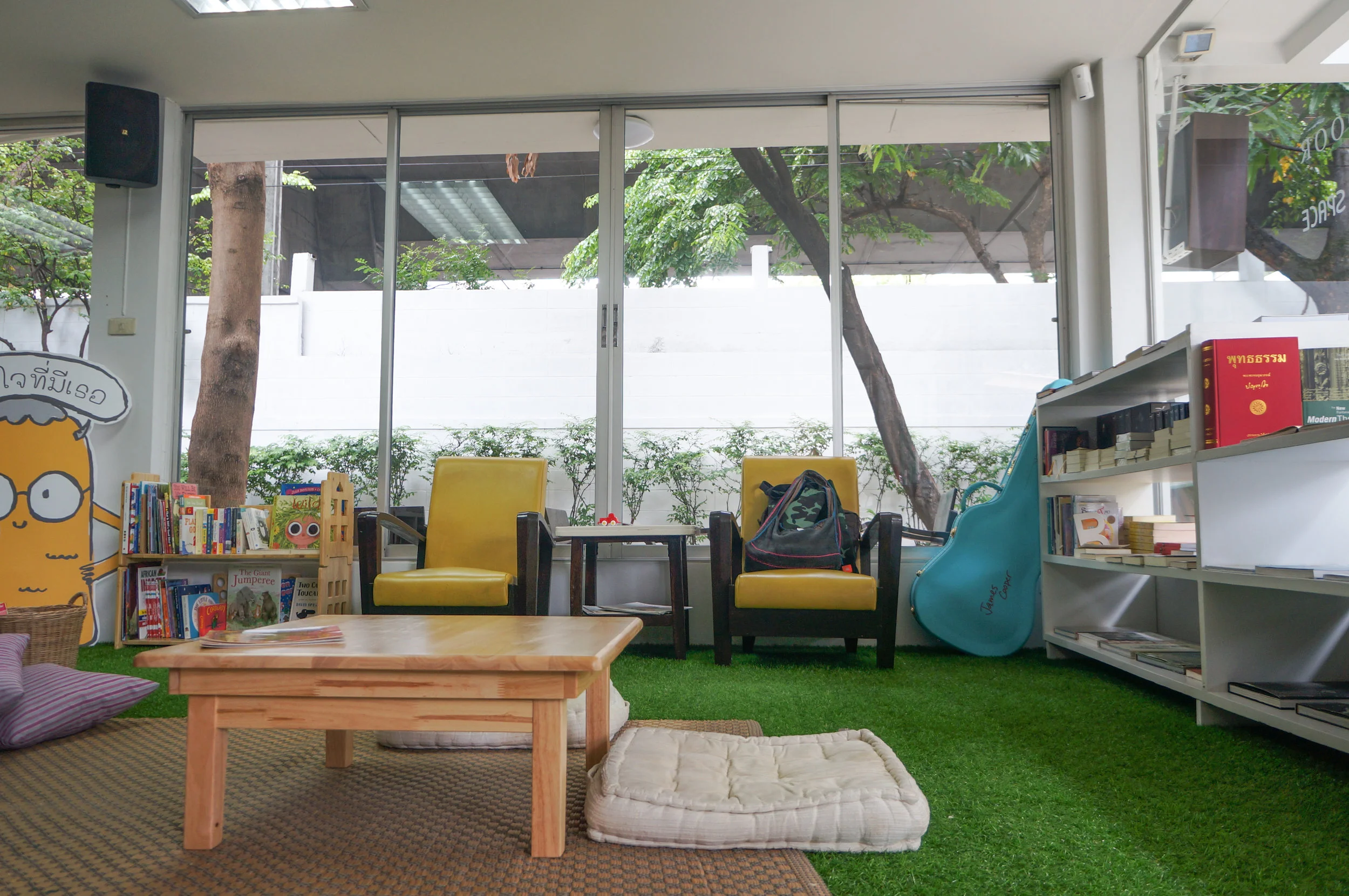Project name: Blue Door Creative Space
Funder/Sponsor: The Rajapruek Institute Foundation
Year: 2017-2018
Project type: Design and Construction
Background
The Blue Door Café has been a fixture in Ekkamai for years. In 2017-2018, with plans to relocate to Rama 9, Openspace underdid the renovation of an old house to welcome the creative space for children and small café in its new location.
The Blue Door Creative Space: Designing for children
While the Blue Door Café was a successful business already, the Rajapruek Institute Foundation which runs it wanted to allocate only a small space to the café and restaurant, and mostly focus on creating a creative space for children to play and learn. The key design concept for this project is to include minimal planning for the children to learn, but instead create an interactive space where they are inspired to build their own adventures through unstructured playtime.
The outdoor area allows for learning experiences centered on gardening and interacting with nature through physical activity.
The indoor is divided into three main rooms:
1. The island room: this is the main room, named after an idea early on in the design process of creating islands for children to read and play in. The name was kept even though the reading islands were removed from the plan: the space is left open, and welcoming to kids activities such as the Jungle Music Activity, Reading Together, and more. This room includes the café, where parents can have a drink while waiting for their children. The walls of this room are painted by a Thai local artist, adding to the happy environment.
2. The jungle room: this room gets its name from its invitation for kids to be adventurous, as well as the conceptual trees that populate it. The “trees” are made of columns topped by green fabric, which from the outside look like tents. With the columns and fabrics at different levels and its “wavy” look, this room is very popular as it inspires natural curiosity in children, who want to see what’s inside. The columns themselves are fitted with holes, so the children can tie coloured threads and make the space their own, or make it more like a jungle.
3. The exhibition room: this is the emptiest room, and has been designed to support workshops and temporary exhibitions on issues related to children, nature or the environment, in line with the work that the Rajapruek Institute Foundation does on reforestation.
The interior of the Blue Door Creative Space can be changed, as most structures can be moved around: even the fixed structures are easily removed.
The design phase took place in November 2017; Blue Door reopened its doors in its new location in February 2018. It has become a popular space for children’s events. For more information, visit their Facebook page.







































